RAT INFESTATION IN CITIES - POISON-FREE ALTERNATIVES FOR URBAN RAT CONTROL
- Verfasst von Daniel Schröer
- 4 min. Lesezeit
- Innovation | Pest Control
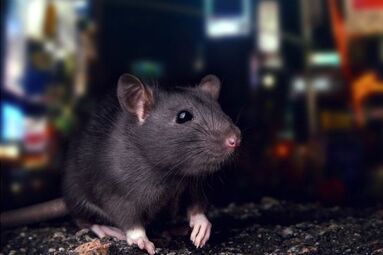
New York City is known to have twice as many rats as people. They cavort in the sewers, subway shafts, parks and dark backyards. And there are also estimated to be millions of Norway rats in major German cities like Berlin. The rodents are wild animals that already in the Middle Ages sought proximity to settlements where food scraps provided a good livelihood. So humans and rats have lived side by side for thousands of years.
Rats are shy, nocturnal creatures that are not dangerous to humans. Nevertheless, they do not have a good reputation: in the Middle Ages, they were blamed for transmitting the plague – although, strictly speaking, the rat flea was responsible for this. And even today, rats are considered dangerous. Like all wild animals, they can potentially transmit diseases. In Germany and Europe, however, this only happens extremely rarely.
Nevertheless, cities in Germany fear so-called rat plagues, where the population becomes so large that rats cannot stay in their hiding places and pollute the whole city with feces and urine. If there are very many rats, the risk of disease also increases. In addition, there is the disgust for the small animals that many people feel. A rat infestation is not least an image problem.
CITIES COMBAT NORWAY RATS PRIMARILY WITH POISONOUS
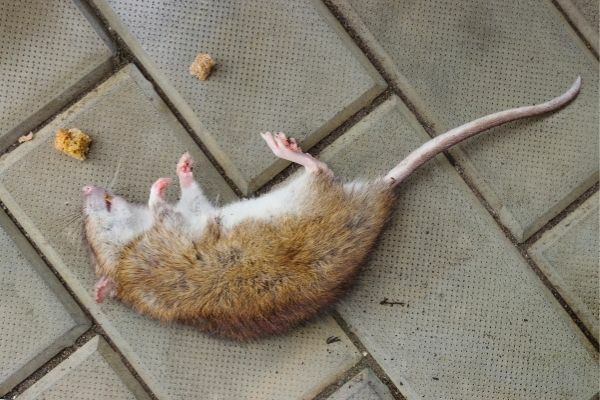
Once a rat population gets out of control, it quickly becomes a rat plague, as the urban Norway rat multiplies rapidly. A female rat can reproduce year-round and gives birth to a maximum of 15 young per litter, but more like four to five on average. After only two to three months, the young are sexually mature themselves.
Rat populations can theoretically be kept in check by a number of factors. Cities often resort permanently to poison baits, of which it is estimated that more than 80 tons are spread each year in Germany – despite increasingly strict legal requirements and warnings from the Federal Environment Agency. Even though poison baits, if properly applied, are relatively effective, their use is extremely problematic.
RAT POISON AS A MAJOR DANGER TO OTHER WILDLIFE AND THE ENVIRONMENT
The agents of the so-called 2nd generation contain anticoagulants, from which the rats bleed to death internally within 3-7 days. The toxins are effective but fall under the definition of PBT substances. This means that they are persistent, bioaccumulative and toxic. They degrade only with difficulty, accumulate in animals and have a toxic effect. This makes them a danger to non-target animals and the environment.
For example, a rat bait can be eaten by pets such as dogs or cats and poison them. In addition, poisoned rats in their days-long death throes are ideal prey for foxes, birds of prey or weasels. And elevated levels of PBT toxins were detected in all of these animals, especially in regions where a lot of rat poison was applied.
Last but not least, bait in the sewer system always runs the risk of being washed away during particularly high water levels. Thus, toxins enter water bodies and affect the health of fish and other aquatic life.
So no matter how you look at it, rat poison should only be used in an emergency to protect animals, nature and ultimately people. But how can this work?
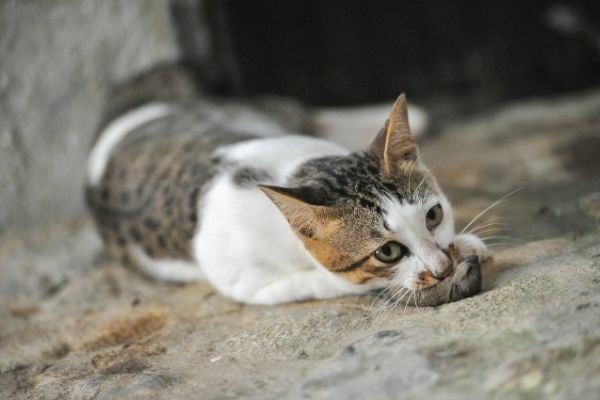
POISON-FREE ALTERNATIVES FOR THE EXPULSION OF RATS
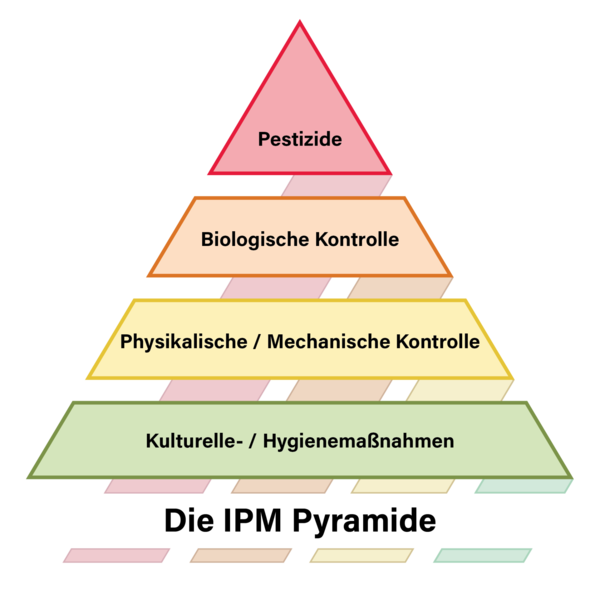
The Integrated Pest Management (IPM) principle is to use poisons only after all other methods have been exhausted. The broad base of the IPM pyramid is formed by structural and hygienic precautions. However, if one looks at common practices in rat control in cities, little attention is paid to these aspects.
The idea is quite simple: rats stay where there is enough food and shelter. The sewers offer great conditions – long distances can be covered quickly, the rats are well protected from the dangers of natural enemies and even find a tidbit under the ground from time to time.
If you block the rats’ access to the sewers, they lose an important habitat and shelter in the city.
Less habitat = smaller rat population
The rats then have to move to other areas of the city, where they have less chance of survival and are less able to raise young than in the shelter of the underground tunnels. This decimates their number quite automatically and, above all, sustainably.
THIS IS HOW RATS CAN BE BLOCKED FROM ACCESSING THE SEWER SYSTEM
The perfect entrance and exit to the sewer system for the rats are the manhole covers. If you succeed in “rat-proofing” manhole covers, the animals won’t make it back underground. That’s where “Rat Cap” comes in, a product that can be used to retrofit manhole covers very cost-effectively.
The idea behind RatCap is quite simple: the device is placed on the dirt trap in a manhole and thus seals the gap between the dirt trap and the manhole. So rats that are in the sewers don’t make it out; and rats that are above ground don’t make it in.
Footage from our PestCam, which is also used in sewer manholes to better understand rat behavior in sewers, showed that rats leave the sewers primarily at night to forage in residential neighborhoods and parks. At dusk at the latest, the ladder steps in the gully take you back underground.
RatCap is a very simple solution that blocks exactly this path, thus greatly reducing a rat population within six to 24 months.
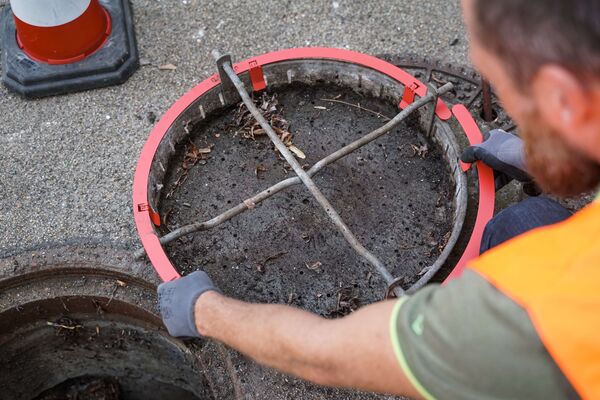
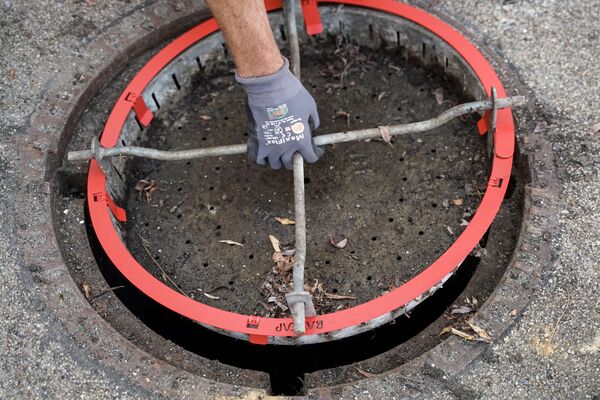
SUMMARY
Rat control with poison can be thought of as an expensive lease for an apartment where things are constantly breaking. Fuses blow when you use the stove and the oven at the same time, the water pressure in the shower is far too weak, and the insulation isn’t the real deal either, so heating costs go through the roof. Those who fight rats with poison have to pay monthly for new baits, which in case of doubt do not even end up where they are supposed to: in the rat’s stomach. And despite the costs and ongoing efforts, you never really get a handle on the situation.
The alternative would be to build your own modern new house. The effort is initially higher and there are certain costs. But once the work is done, the builder can sit back and benefit from this investment for many years to come. It is a similar situation with construction measures that reduce the habitat for rats in cities. Once properly implemented, the cost is amortized very quickly. In addition, there are big gains for the environment.
RatCap is an example of structural measures cities can take to control rats. With a few simple steps and with the help of mounting clips, the solution is quickly mounted. It lasts for many years and costs less in the long run than baiting with poisons. If you are interested in RatCap for your urban rat control, just contact us!
You would like to learn more about the use of RatCap in practice? Berliner Wasserbetriebe report on their successes in our case study.


